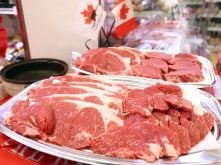CRESTON, B.C. – A 2008 change in beef slaughter rules in British Columbia left cattle producers in the Creston area with few options.
Slaughtering on the farm and then selling beef from the farmgate was no longer possible. New regulations dictated that all meat produced in B.C. for sale for human consumption had to pass through a licensed and inspected slaughter facility.
The region didn’t have one. It took some doing, said Tom Tarzwell of Tarzwell Farms, but in November 2008 he opened Creston Valley’s only abattoir. The next closest one is in Cranbrook about 100 kilometres to the east and the Okanagan Valley about 400 km to the west.
Read Also

More factors affecting winter weather
When you combine a weak La Niña, early Siberian snow, and a warm northern Pacific, it’s easy to see why long-range winter forecasting is so complex.
“You have to be pretty determined to do this,” said Tarzwell, as he recounted the regulations he was required to follow.
“It took a bit of stubbornness, and we’re here. We’re a community solution, is what the government calls us. As onerous as it was when we all started, they were pretty supportive.”
The facility does custom killing and has a capacity of 12 cows per day. Slaughter takes place once a week, with cutting and wrapping done by other businesses.
A Canadian Food Inspection Agency inspector, hired by the province, looks after meat inspection before, during and after each animal is slaughtered, said Tarzwell.
“They do a good job. We can’t slaughter anything until they’re there. They see it alive, they watch us kill it, they look at certain organs and then they look at the carcass before we roll it into the cooler.”
Tarzwell Farms is a provincial plant, so the meat it processes cannot be sold out of province. Tarzwell said the plant seems to meet the needs of the region’s small number of beef and dairy producers, including his own farm.
Tarzwell has a 35-head cow herd and feeds his animals in his feedlot.
“What we raise here is grass. We’ve gone to the Hereford breeds, the British breeds, where they do well on grass. When they come into the feedlot, they really don’t need a lot of finishing to get to the double A or triple A.”
Tarzwell has sold beef from the farmgate for 15 years and said initiatives to promote local food are working well. All his beef is professionally graded and is sold in small meat shops in the area as well as at farmers’ markets.
Offal from the facility goes for pet food, and waste material from each carcass is composted in two on-site biovators. Tarzwell uses the composted material as fertilizer on his land.















